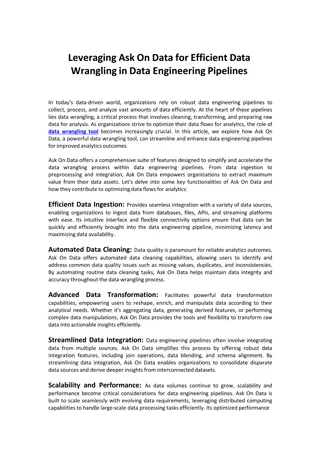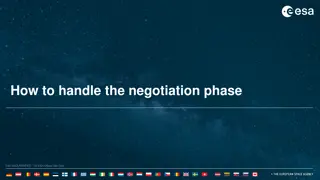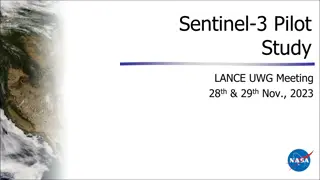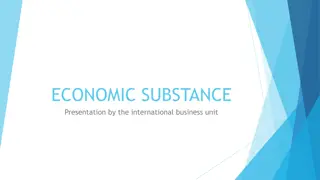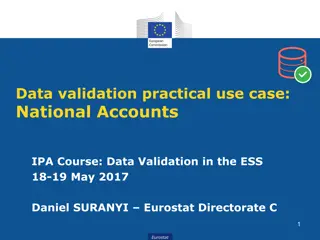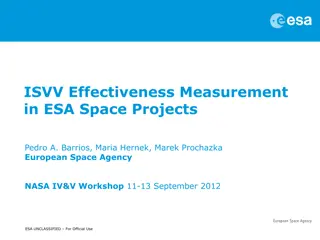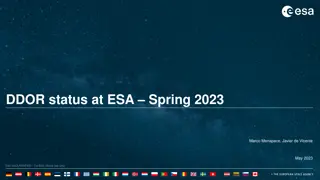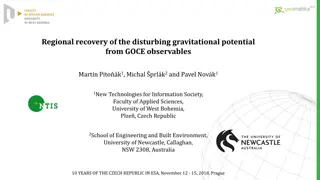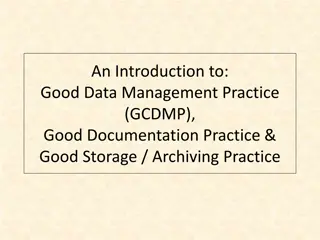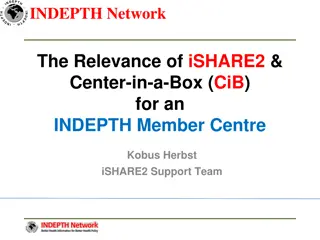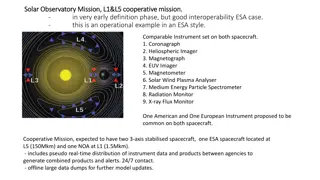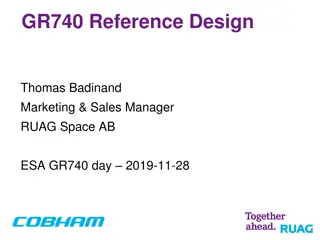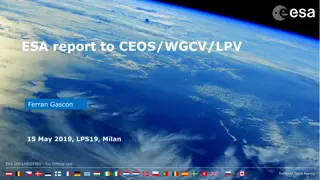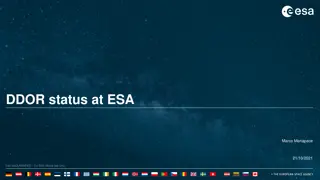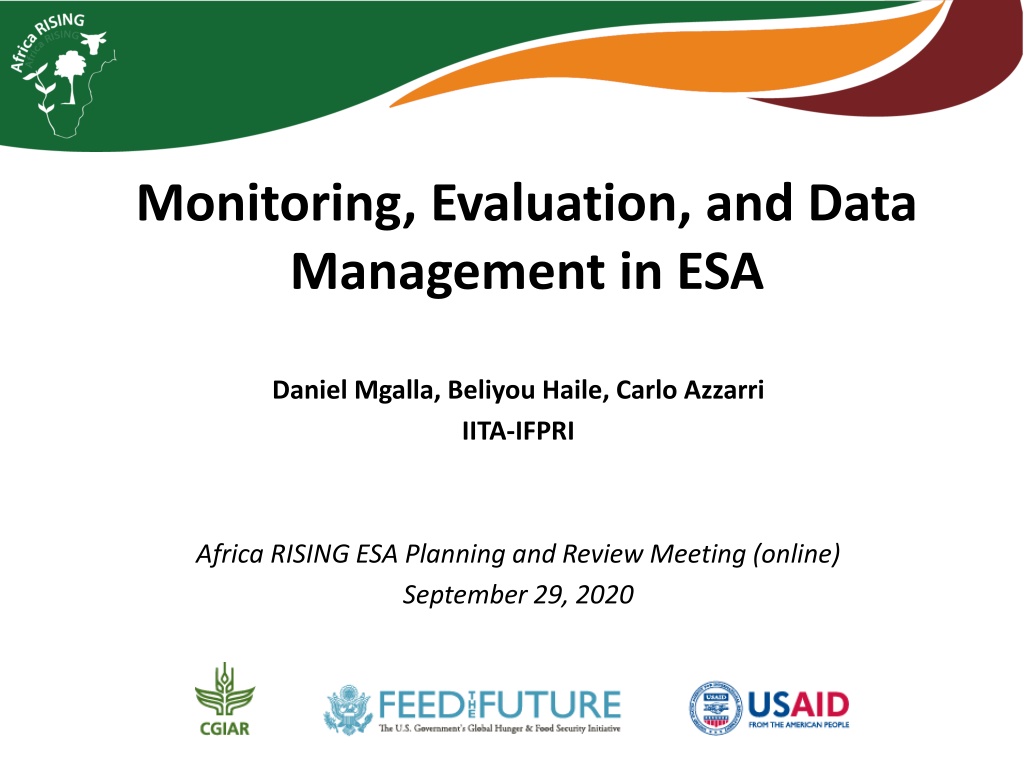
ESA Monitoring, Evaluation, and Data Management Overview
Explore the comprehensive monitoring, evaluation, and data management activities in the context of Africa RISING ESA program, focusing on direct beneficiaries, scaling partnerships, and target achievements to drive agricultural research and development impact in Tanzania, Malawi, and Zambia.
Download Presentation

Please find below an Image/Link to download the presentation.
The content on the website is provided AS IS for your information and personal use only. It may not be sold, licensed, or shared on other websites without obtaining consent from the author. Download presentation by click this link. If you encounter any issues during the download, it is possible that the publisher has removed the file from their server.
E N D
Presentation Transcript
Monitoring, Evaluation, and Data Management in ESA Daniel Mgalla, Beliyou Haile, Carlo Azzarri IITA-IFPRI Africa RISING ESA Planning and Review Meeting (online) September 29, 2020
Outline Key 2020 activities AR direct and scaling beneficiary data AR scaling partnerships (and additional details) Online AR data management FtF data Planned M&E activities Ongoing/planned research and program-wide synthesis
Direct beneficiaries Data Beneficiary and Technology Tracking Tool (BTTT): Malawi: completed! Tanzania: in progress Zambia: just started (names of beneficiaries with technology submitted) Next Step: Researchers to continue submitting names/information of direct beneficiaries along with technologies applied (8 PIs submitted the names with technologies; 2 pending in Tanzania) Researchers to submit missing information for some villages (e.g., Dr. Swai for Njoro, ) harmonization and documentation using the
# of direct beneficiaries reached as of Sept 2020 (against 2020 cumulative targets) 9000 8259 7894 8000 7000 6000 5000 4340 3986 4000 3000 2526 2200 2073 2000 1028 1000 122% 109% 96% 47% 0 Tanzania Malawi Zambia Total Target Achieved % Achieved
Scaling beneficiaries Strong development partners participation (IoP, Lead foundation, AR NAFAKA, TLC, SANE, ZARI) 61% scaling beneficiaries reached so far against 2020 cumulative targets Clear documentation needed on scaling to support scaling efforts (focusing on scaling approaches, achievements, success stories, lessons learned and challenges)
# of scaling beneficiaries reached as of Sept 2020 (against 2016-20 cumulative targets)
Direct & Scaling beneficiaries Targets 2020-21 Impact targets 2015 2016 2017 2018 2019 2020 2021 Households participating directly in AR research 2,965 5,063 6,014 6,603 7,338 8,259 9,410 Tanzania Malawi 1,659 1,306 1,710 1,633 1,773 2,041 1,852 2,551 1,950 3,188 2,073 3,986 2,228 4,982 Zambia 1,720 2,200 2,200 2,200 2,200 2,200 Households participating in AR development partner activities 4,011 58,411 169,201 203,342 242,851 275,197 298,038 Tanzania 2705 16,070 82,800 91,080 100,188 110,207 121,227 Malawi 1306 12,796 39,645 65,506 95,907 118,234 130,055 Zambia 29,545 46,756 46,756 46,756 46,756 46,756 Total households in FTF zones of influence 2,192 million 1,004 million 1,188 million 2,656 million 1,037 million 1,226 million 392,893 2,740 million 1,070 million 1,265 million 405,229 2,823 million 1,102 million 1,303 million 417,566 2,906 million 1,135 million 1,341 million 429,903 2,988 million 1,167 million 1,379 million 442,240 3,072 million 1,200 million 1,417 million 454,577 Tanzania Malawi Zambia
Status of Technology Scaling & Partnerships Are several development partners inactive (NAFAKA, IOP, SANE, others)? Are we on track to achieving our scaling targets? How feasible is to bring in more development partners? And to increase engagement with local and regional government bodies? What specific/additional scaling strategies can be introduced to increase outreach? Status of partnerships
Technology Scaling & Partnerships: Malawi 2020: 118,234 targets versus 78,036 -> why? 2021: how feasible is it to reach 130,055? New partnerships possible? Which ones, what methods?
Technology Scaling & Partnerships: Tanzania 2020: 110,287 targets versus 68,426 -> why? 2021: how feasible is it to reach 121,227? New partnerships possible? Which ones, what methods?
Technology Scaling & Partnerships: Zambia 2020: 46,756 targets versus 20,741 -> why? 2021: how feasible is it to reach 46,756? New partnerships possible? Which ones, what methods?
Technology Scaling & Partnerships: general 1. beneficiaries of AR validated technologies? 2. What kind of data are they collecting? Using which tool? Are the data they are collecting enough for our reporting (using our scaling tool)? 3. For partners who are not collecting scaling beneficiary data, what would it take (human and $$) to collect minimum scaling data using our scaling tool? Which of these partners are collecting data about
Online AR data management using Dataverse: 2020 data submission # submitted for review # sent for upload # of researchers submitted Country Review status Upload Status 2019 2020 15 in progress,6 Completed inprogress Completed 0 Tanzania 21 6 7 6 uploaded 12 9 Malawi Zambia Total 9 5 35 9 5 20 Uploaded Uploaded 9 5 23 All 7 12
FtF data: key items researchers submitted narratives for 10% difference nor filling IM performance narrative sessions Missing targets for some researchers (only six researchers set targets from 2019 to 2021) Six researchers have submitted FtF data so far Submit by Oct 10: 1. FY2020 indicator results (i.e., actuals) 2. FY2021-22-23 targets (if applicable), and FTF-related performance narratives Daniel will be working with you in the next couple of weeks to compile the data for timely submission to USAID Some data without providing
FtF data: to be incorporated into workplans Deliverables indicators( against ) targets for FtF Deliverables against project-level output level indicators Required: targets for researchers who did not submit!
Planned M&E activities Finalize BTTT data harmonization for all countries Monitoring different types of AR beneficiaries (old, new and dropped out), also through collection of basic information through Lead Farmers Support researchers in FtF & other indicators data collection Monitoring of scaling up partnerships, activities, and beneficiaries Collaborate with communication team to create various knowledge products
Ongoing/planned studies and program-wide synthesis/1 Malawi follow-up data collected in 2019, data cleaned. Panel analysis of program impact including on longer term economic indicators such as poverty and food security has just started Tanzania follow-up planned for 2021, baseline survey conducted in 2014 covering about 800 households from Babati, Kongwa, and Kiteto Potential to sample additional/new households who joined the program since baseline (based on updated beneficiary data in the BTTT)
Ongoing/planned studies and program-wide synthesis/2 Assessment of the adoption and the impact of AR technologies among scaling beneficiaries as part of NAFAKA (with Haroon et al.) Contributed questions to NAFAKA s annual survey on technology adoption, NRM, and post harvest management practice Collaborate on the analysis and write-up of data to be collected Assessment of welfare impacts of participation in multiple output markets (with Julius) Contributed to a survey tool to gather data on participant's knowledge about AR technologies
Ongoing/planned studies and program-wide syntheses/3 Cross-country study on scaling (approaches, achievements, etc.) for a knowledge/legacy product (with help from Jonathan). What is needed? Case 1. A scaling partner already has a database of scaling beneficiaries (e.g., NAFAKA) AR to formally request NAFAKA access to its scaling database and pull out necessary information for AR reporting Case 2. A scaling partner does not have a database of scaling beneficiaries (e.g. IoP?) M&E team to work with AR researchers to figure out how and what it takes to gather minimum data on scaling beneficiaries using AR scaling tool We will work with PIs/researchers to compile info about which partner has what scaling-related info
Ongoing/planned studies and program-wide syntheses/4 E.g., plan under way with Scaling of Terrace Technologies by Lead Foundation in Dodoma The objective is to assess the extent of scaling, strategies impact of these technologies on welfare of smallholder farmers in Dodoma districts What is needed? Access to farmers info in the selected location (collaboration with Dr. Swai) Similar study is needed in Malawi through DAECC and Zambia to produce legacy products Regis/Christian: how/what can we collaborate on this effort?
Ongoing/planned studies and program-wide syntheses/5 Program wide synthesis: Study #1: Linkages between agricultural market integration, agricultural production, livelihoods, poverty, and food security Study #2: Analysis of linkages between on-farm production and dietary diversity Case study completed for Ghana (guinea-pig) Work to be expanded to other AR countries including in ESA
Example of program-wide synthesis: Agricultural INPUT market integration and economic outcomes in Ghana Higher cereal yield and economic outcomes with higher level of integration into INPUT markets (seeds, pesticides, fertilizers, labor, etc.)
Example of program-wide syntheses: Agricultural OUTPUT market integration and economic outcomes in Ghana Better agricultural and economic outcomes among households that are integrated into OUTPUT markets (i.e., have higher marketable surplus)
Example of program-wide syntheses: On-farm production diversity and dietary diversity in Ghana Higher on-farm production diversity associated with more diverse household diets The lower the access to markets, the stronger the association between production and dietary diversity
Thank You Africa Research in Sustainable Intensification for the Next Generation africa-rising.net This presentation is licensed for use under the Creative Commons Attribution 4.0 International Licence.






